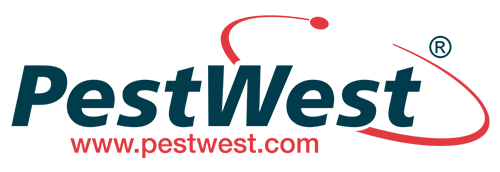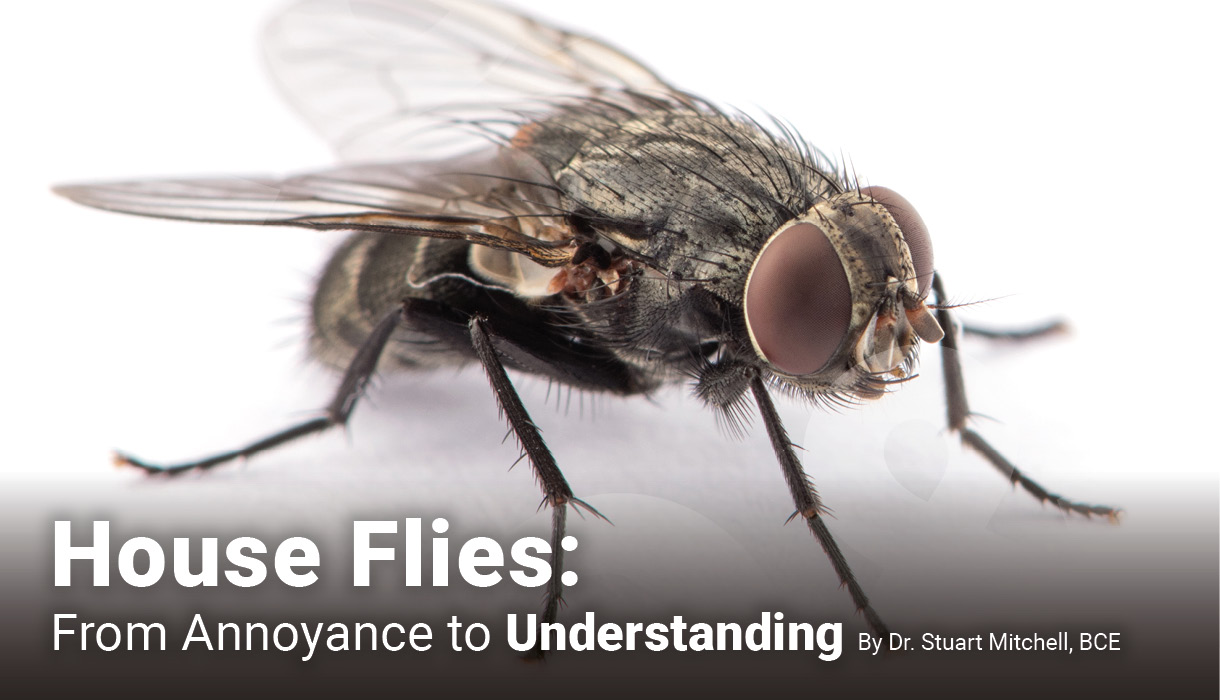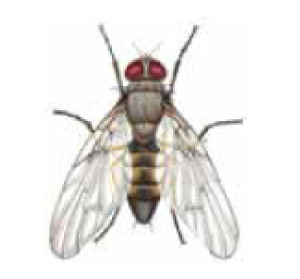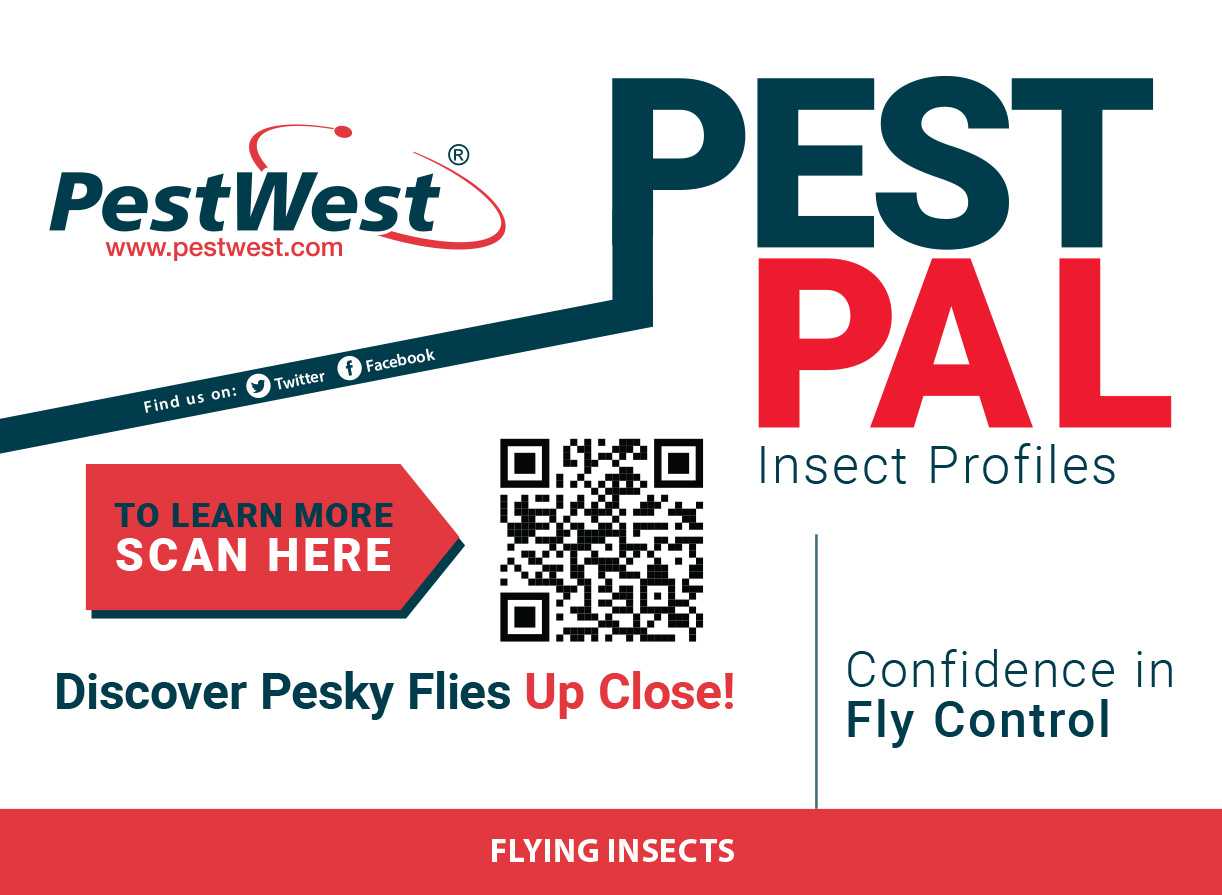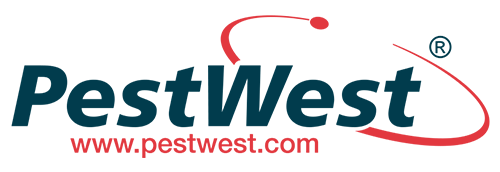People in and around homes and businesses frequently experience the nuisance, disgust, and general threat to health that House fly presence brings. House flies readily transfer filth to food, such as from a disgusting, dripping dumpster to your hot hamburger. No one wants flies with their fries! Read-on to discover disgusting House flies.
What is a House fly?
House fly, scientifically named Musca domestica (meaning “house fly”), is one of the most common and abundant of the pesky flies. Adult House flies are up to ¼” long. A unique identifiable physical feature are the four dark stripes on top of the grey thorax or middle section of the House fly.
Interestingly, the female House fly is larger than the male, so the two compound eyes appear to be spaced apart. The male fly has compound eyes that appear to be touching.
Where do House flies lay eggs?
House flies lay eggs in moist, decaying organic materials. These include suitable sites for larvae (maggots) to feed and grow, such as garbage inside containers, and other wastes of manure, feces, and carrion. Ensure that containers are sealed and managed. Dispose of other wastes properly.
How long do House flies live?
House flies undergo complete metamorphosis or egg, larva (maggot), pupa, and adult stages. They can go from egg to adult in 6 days (with good environmental conditions and available food). Adult House flies are short-lived at 15-30 days. This depends upon environmental conditions and lack of predation.
Do House flies bite?
House flies do not bite as they do not possess mouthparts to pierce skin. With sponging mouthparts, House flies “taste-test” by regurgitating saliva onto appetitive food sources and then sponge up the predigested mixture. There are other species of flies that bite such as the female and male Stable fly, which look much like a House fly.
How to kill House flies?
There several are ways to kill and control House flies. Good sanitation and maintenance practices are first and foremost in preventing and controlling House fly populations. A combination of methods can provide long-term relief from House fly annoyance.
- Eliminate garbage: Ensure that all garbage and rich organic materials (such as dog feces) are routinely removed. These are areas where House flies lay eggs and feed.
- Maintain dumpsters, garbage receptacles, and recycle bins: Keep dumpsters, garbage cans, and recycle bins clean and in good condition. Position dumpsters at least 50 feet from, and upwind of, the building. These practices minimize House fly attraction, feeding, and reproduction.
- Secure storage: Store garbage in well-sealed containers to keep female House flies out of potential reproductive materials.
- Use screens: Install and maintain window and door screens to restrict House fly entry into homes and businesses.
- Install air curtains: Install and maintain air curtains with appropriate air-velocities. These are 3 meters/second for service doors and drive-through-windows and 9 meters/second for overhead doors. House flies can fly 4.5 mph, so air curtains prevent them from entering buildings.
- Use light traps: Install numerous light traps to both monitor and control House fly populations.
- Other methods: Labeler use of insecticides, fly swatters, and sticky traps can be used to kill and control House flies.
House flies are notorious for moving filth and pathogens, contaminating food and food preparation surfaces. Contamination that causes foodborne illnesses. Knowing a few details about House fly habits can help take them from annoyance to understanding. For an even better understanding of House fly habits and control, connect with PestWest at 941.358.1983 or drop a line at customerservice@pestwest.com.
Housefly insect Id
More flies IDs
